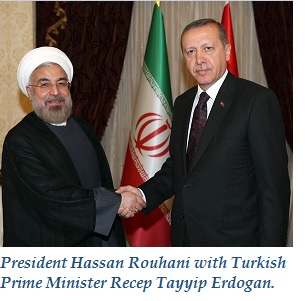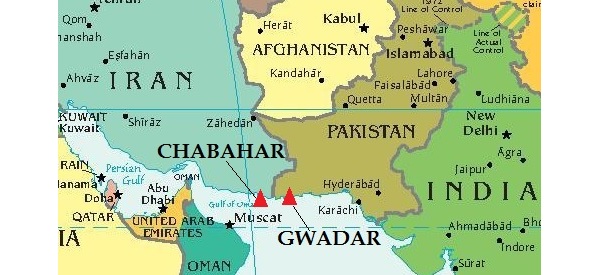The most important developments in June and July were India’s payments of two more installments of $550 million to Iran for previous oil purchases. The interim nuclear deal enabled the repatriation of $4.2 billion in oil revenues to Tehran. India forwarded its first of payment in May. The three total $1.65 billion.
The Statistics Center of Iran and several government officials announced promising figures suggesting improvements in the economy. The inflation rate fell 24.2 percent at the end of July from 26.2 percent at the end of June. The unemployment rate in the first quarter of 2014 was 10.5 percent, about 1.8 percent less than during the same period in 2013.
Some international companies also showed renewed interest in Iran. Boeing, under a special license from the U.S. government, agreed to sell Iran airplane parts for the first time since 1979. Iran’s largest auto maker, Khodro Industrial Group, restarted exporting to Russia for the first time in five years. Khodro also met with international auto makers Renault and Peugeot.
But these improvements may only be marginal or anecdotal. On July 29, U.S. Treasury Under Secretary for Terrorism and Financial Intelligence David S. Cohen told a Congressional committee that “Iran remains in a deep economic hole” and that its economy “is doing worse today” than it was at the outset of the interim nuclear deal in January.
The following is a run-down of the top economic stories from June and July with links.
Domestic Developments
Inflation: Iran’s inflation rate
fell to 24.2 percent at the end of July from 26.2 percent at the end of June, according to the Statistics Center of Iran.
Unemployment: The unemployment rate among Iranians with a bachelor’s degree
rose from 14.6 percent in 2005 to 20.1 percent in 2013, according to the head of the National Census Centre.
Iran’s Statistical Center
reported that unemployment from January to March 2014 was 10.5 percent, about 1.8 percent less than during the same period in 2013.
Poverty: The overall poverty level during Ahmadinejad’s presidency
rose dramatically from 21.9 percent in 2005 to 50 percent in 2013, according to Iran’s finance minister.
Income: President Rouhani’s economic advisor, Masoud Nili, candidly discussed the poor state of the economy in an
interview with state television. “The national incomes have declined 20 per cent in recent 2 years; when compared to market exchange rate, monetary base, and price index in 2005, they show rises as 3.5, 5.5, and 4.5 times, respectively, in 2013; while at the same period, the production increased only 20 per cent, and the number of employed people declined as well,” he said.
Privatization: Iran has
transferred about $776.3 million worth of shares of state-run companies to the private sector in spring 2014, according to Tasnim News Agency. Iran plans to privatize some 186 state-run companies by March 2015.
Gasoline: Gasoline in Iran, at an average of $1.52 a gallon, is fourth-cheapest among 61 countries with per capita daily incomes more than $3.50, according to a
Bloomberg report. The Islamic Republic had the highest fossil-fuel subsidy in the world until 2010.
Iran began distributing Euro-4 premium
gasoline, which meets European emission standards that are stricter than Iran's, in Tehran and Tabriz. Distribution is slated to expand to Shiraz, Bandar Abbas, Esfahan and Mashhad.
Oil Minister Bijan Namdar Zanganeh
said that Iranians are using more than $90 billion worth of liquid fuel and that the government is using subsidies to pay for $80 billion.
Oil output: Iran has the capacity to produce more than 4 million
barrels per day, according to Mohammad Baqer Nobakht, Rouhani’s adviser for supervision and strategic affairs.
Nuclear power plants: Iran
announced that Russia’s state nuclear power company Rosatom will build two more nuclear reactors at the Bushehr power plant. Rosatom expects to start construction before the end of 2014. The announcement came as the company’s deputy director general, Nikolai Spassky,
visited Tehran.
Tourism: Foreign tourist visits to Iran climbed
215 percent in spring 2014 compared to 2013, according to the deputy director of Iran’s Cultural Heritage, Tourism and Handicrafts Organization. “Over 23,600 foreign tourists visited Iran in the three-month period, compared with 7,500 last year,” said Morteza Rahmani-Movahed.
International Developments
 U.S. sanctions:
U.S. sanctions: The cumulative impact of U.S. sanctions since 2011 has cost Iran some $120 billion in oil revenues, according to the Treasury Undersecretary for Terrorism and Financial Intelligence
David S. Cohen. “Iran's currency, the rial, has depreciated by about 50 percent since January 2012 and has declined by about 7 percent since the JPOA was announced last November,” he told a Senate Committee on Foreign Relations hearing.
Indian payments: India made two more $550 million
payments to Iran, one in June and one in July, for oil under the interim nuclear
deal, which allows Tehran to repatriate $4.2 billion in blocked funds across the world. New Delhi is reportedly looking into implementing a
mechanism that would allow Iran to use owed money to buy food, medicine and other humanitarian goods bought in third countries.
Nuclear talks: The four-month extension of nuclear talks will spare Iran “a 20 percent fall in its oil sales,” but nothing more, according to the international affairs director at the National Iranian Oil Company. “Short-term agreements have a no war-no peace nature. Such agreements make conditions for Iran's oil sales unclear because issues like shipping, banking and insurance are long-term matters and companies active in these sectors usually don't have any desire to change their activities in the short term,” said
Mohsen Ghamsari.
Oil and Gas: China, Iran's biggest oil buyer, imported nearly 50 percent more in the first half of 2014 than in 2013, according to data collected by
Reuters. Purchases by Japan and Korea were down compared to 2013. But the combined purchases of China, India, Japan and Korea were up nearly 25 percent from last year, at 1.2 million barrels per day versus 961,236.
India imported 281,000 bpd of Iranian crude oil from January to June, up by a
third compared to the same period last year, according to
Reuters. India is Iran’s second largest oil buyer after China.
Petrochemical exports have
increased 6.6 percent during the first quarter of the Iranian calendar year, which started on March 21, 2014. And domestic sales have risen 7.3 percent, according to Deputy Managing Director of Iran’s National Petrochemical Company (NPC) Mohammad Hassan Peivandi.
Iran could be ready to make up for a shortage in oil in the world markets within three months, according the managing director of the National Iranian Oil Company,
Rokneddin Javadi.
Aviation: Boeing agreed to
supply Iran Air with plane parts for the first time since the U.S. embargo on bilateral trade was implemented in 1979. In April, the U.S. government issued a license to Boeing allowing it to provide “spare parts that are for safety purposes” to Iran for a “limited period of time.”
Banking sanctions: Germany’s second largest bank, Commerzbank, is expected to pay $600 to $800 million for doing business with Iran and other countries under U.S.
sanctions. New York’s top banking regulator, the Justice Department, the Treasury Department, the Federal Reserve and the Manhattan District Attorney are reportedly involved in talks.
Non-oil exports: Non-oil exports in the second quarter of 2014 have
increased by about 20 percent compared to the same period in 2013, according to the Islamic Republic of Iran Customs Administration. Iran exported some $11.86 billion in goods in April, May and June.
Iran’s carpet exports
reached $57 million in the first quarter of the Iranian calendar year that began on March 20, 2014. Iran’s National Carpet Center said exports rose 23 percent compared to the same period last year. Iran exported 1,000 tons of hand-made carpets to nearly 80 countries. The U.S. reportedly
imported $51,000 worth of carpets.
Auto industry: Iran started
exporting cars to Russia for the first time in five years. Iran-Khodro, stopped shipping vehicles to Russia in 2009 when it adopted stricter Euro-5 emission standards. Iran’s largest auto manufacturer plans to export 10,000 cars to Russia by 2015.
Khodro also restarted talks with international companies Renault and Peugeot. “The Group has started to get back in touch with our past partners to get ready for a return of our activities there, if possible,” said a Peugeot spokeswoman, according to
The Wall Street Journal.
Turkey: Iran and Turkey signed 10 cooperation agreements on tourism, joint ventures and customs cooperation during President Rouhani’s visit to Ankara. Turkey sought a discount on Iranian gas but the two sides failed to agree on a
price.
E.U. sanctions : An E.U. court annulled
sanctions on Tehran’s Sharif University of Technology because of lack of sufficient evidence linking it to the country’s nuclear program. But the asset freeze will remain in effect for two months, giving E.U. governments time to submit further evidence.
Germany: Germany’s exports to Iran
increased by 20 percent in the first four months of 2014 compared to the period last year, according to Eurostat. They reached €797 million while Iran’s exports to Germany also increased to €107 million, up nine percent from 2013.
Humanitarian trade: Iran is reportedly lobbying to get HSBC, Europe’s largest bank, to process humanitarian trade transactions that have been frozen due to concerns about violating international sanctions on the Islamic Republic, according to
Reuters.
Ports: India’s transport minister, Nitin Gadkari,
said that two state-run ports are investing in Iran’s Chabahar port, now under construction. Chabahar, on Iran’s southeast coast, could enable Indian exports to Iran and landlocked Afghanistan to bypass Pakistan. Transporting goods between Iran, Afghanistan and India would be much
shorter.
Foreign investment: Iran’s economy will need more foreign investment to thrive, according to Industry, Mines and Trade Minister Mohammad-Reza Nematzadeh. Foreign investors put some
$783 million into Iran’s industrial marks between March 2013 and March 2014, which created more than 11,000 job opportunities, according to Deputy Director of Iran Small Industries and Industrial Parks Organization Qolamreza Soleimani.
Bio-energy: A U.S. company signed a preliminary agreement to invest $1.175 billion in Iran. World Eco Energy plans to produce 250 megawatts of electricity daily by burning trash and processing algae, salt and waste water, according to
AFP.
United Arab Emirates: The trade volume for 2013 between Iran and the United Arab Emirates totaled more than
$15 billion in 2013, according to Iran’s ambassador to the UAE. And Some 50,000 Iranian
companies are operating in Dubai alone, according to the head of the Dubai Chamber of Commerce.
Finance expo: More than
360 Iranian and foreign companies reportedly participated in the Seventh International Exhibition of Exchange, Bank and Insurance of Iran from June 8 to 11. Companies from England, Germany, Italy, Switzerland, Greece, Cyprus, Turkey and South Korea were present.
 U.S. sanctions: The cumulative impact of U.S. sanctions since 2011 has cost Iran some $120 billion in oil revenues, according to the Treasury Undersecretary for Terrorism and Financial Intelligence David S. Cohen. “Iran's currency, the rial, has depreciated by about 50 percent since January 2012 and has declined by about 7 percent since the JPOA was announced last November,” he told a Senate Committee on Foreign Relations hearing.
U.S. sanctions: The cumulative impact of U.S. sanctions since 2011 has cost Iran some $120 billion in oil revenues, according to the Treasury Undersecretary for Terrorism and Financial Intelligence David S. Cohen. “Iran's currency, the rial, has depreciated by about 50 percent since January 2012 and has declined by about 7 percent since the JPOA was announced last November,” he told a Senate Committee on Foreign Relations hearing.

